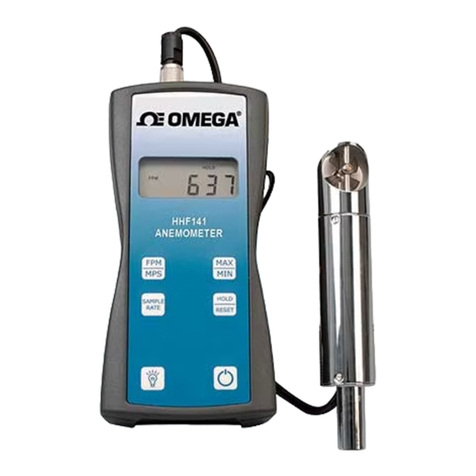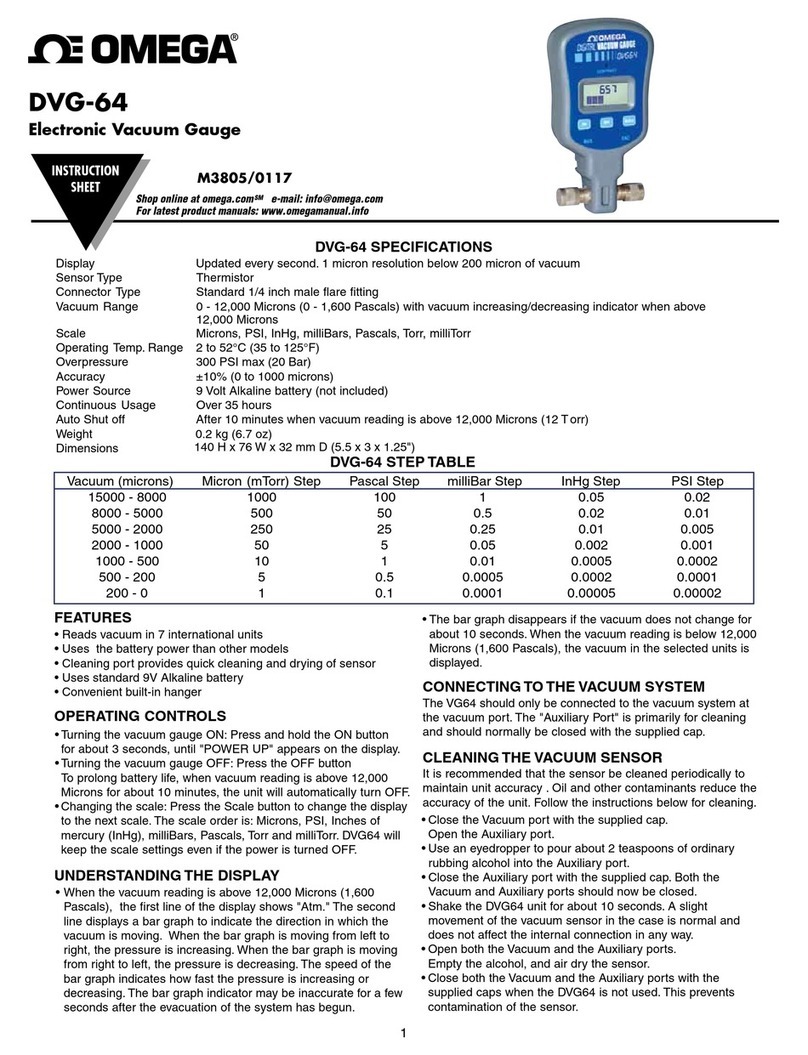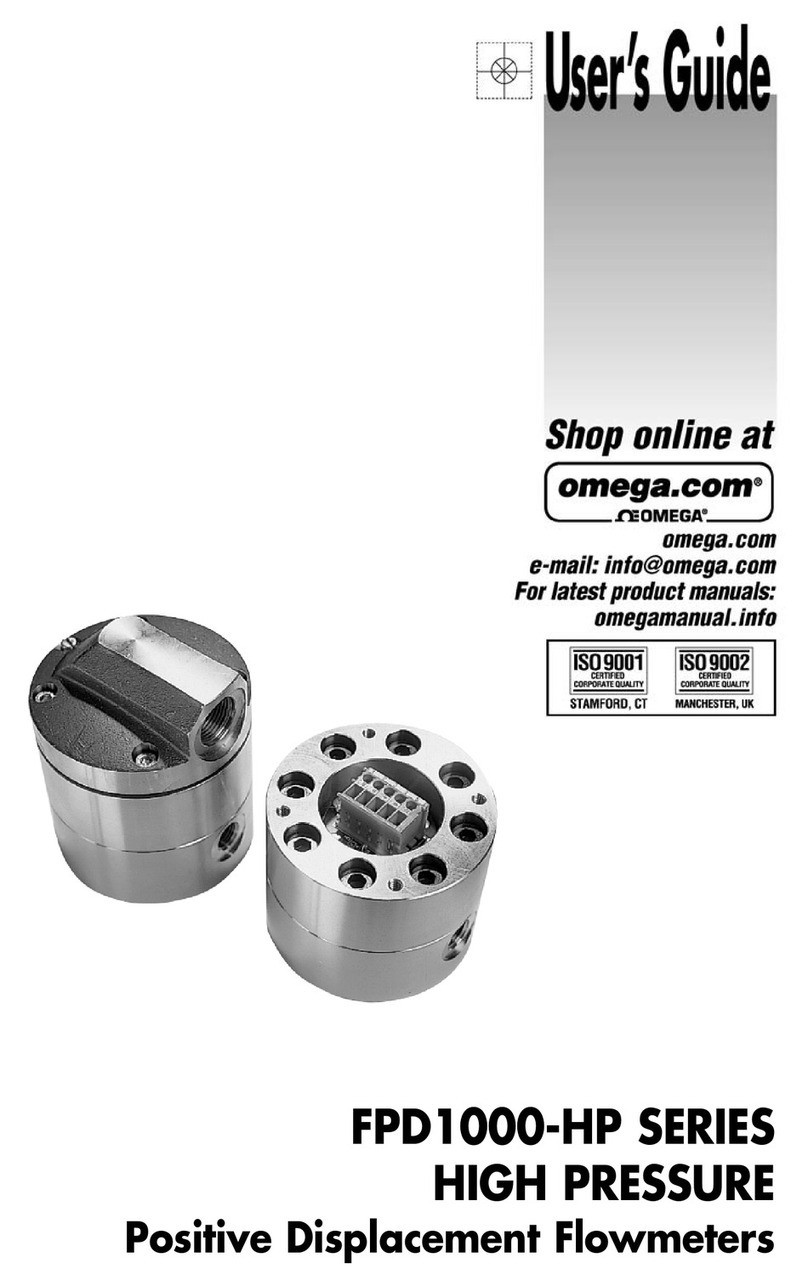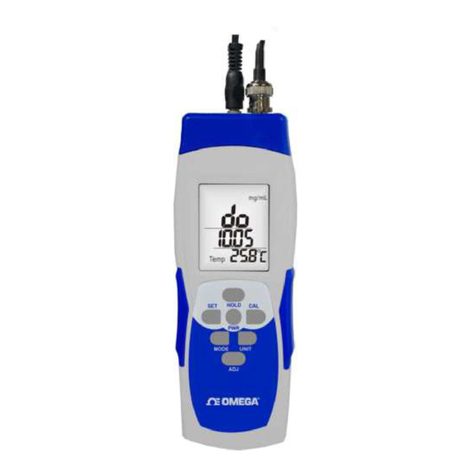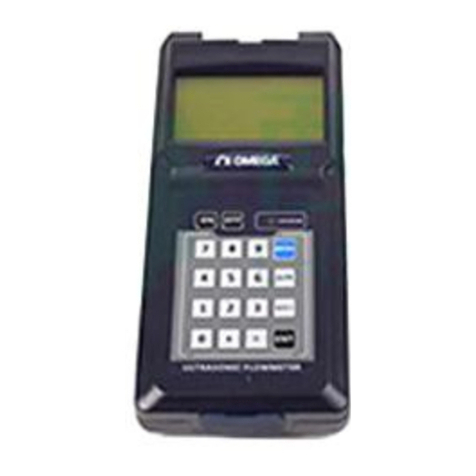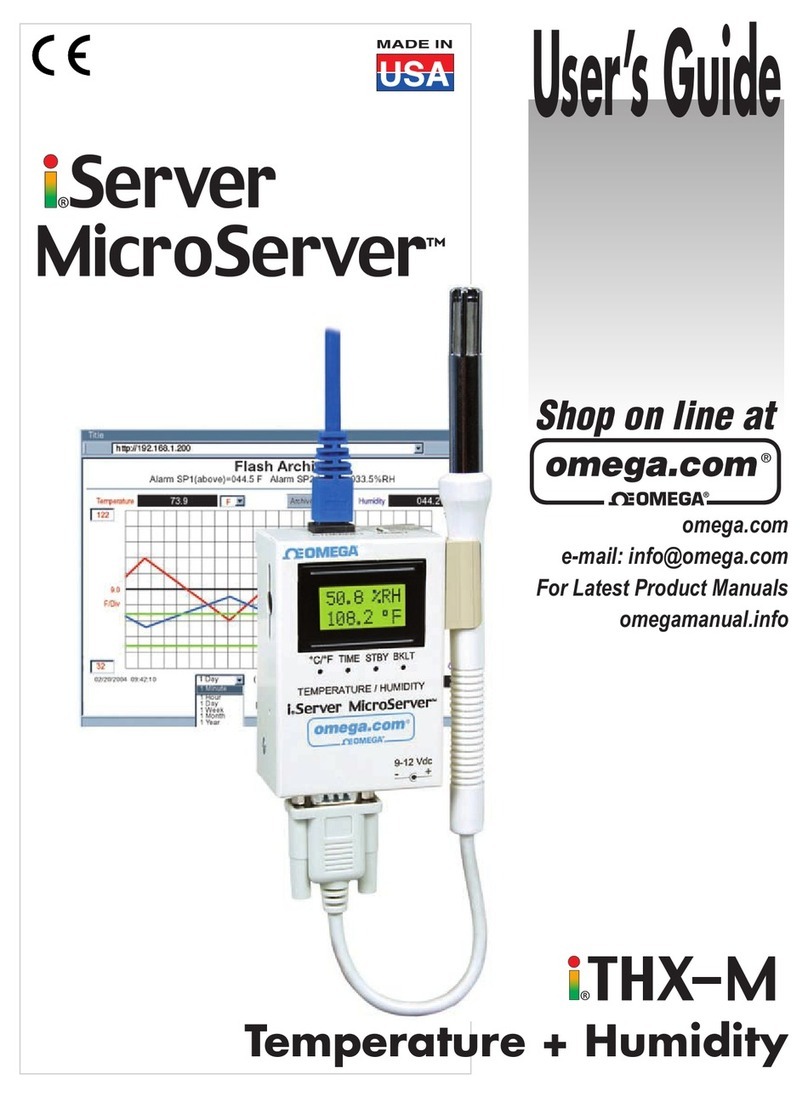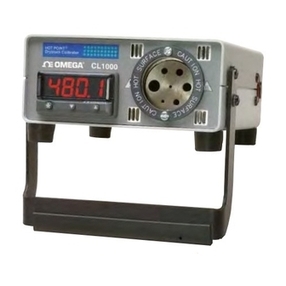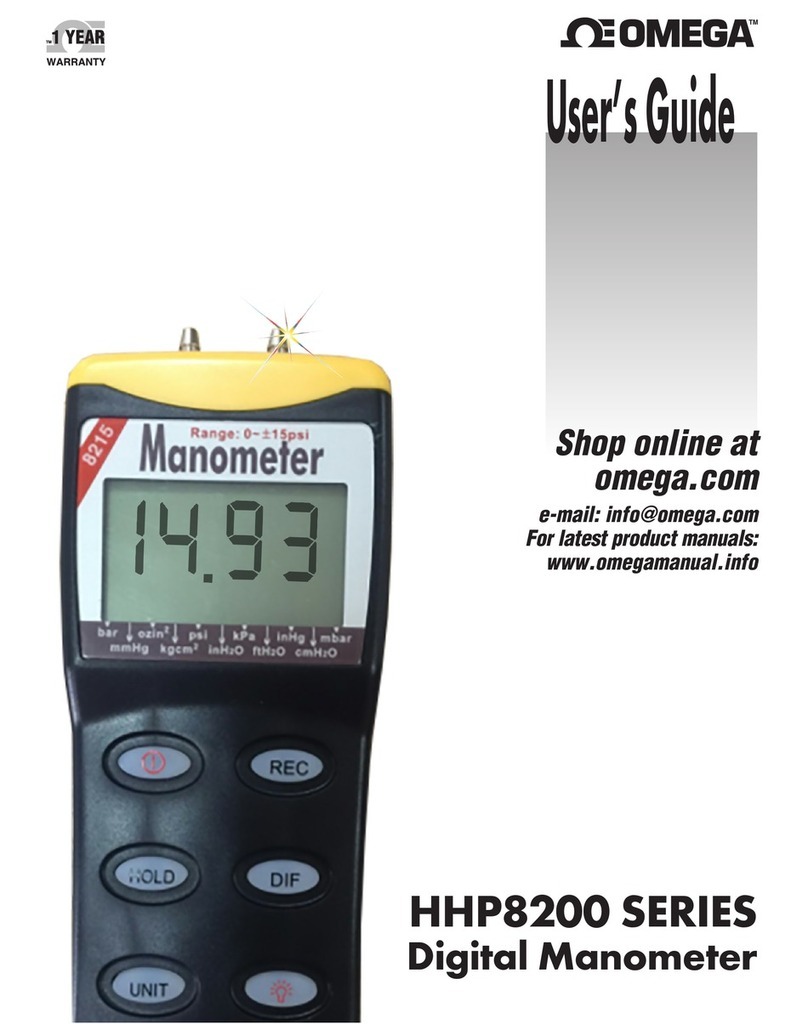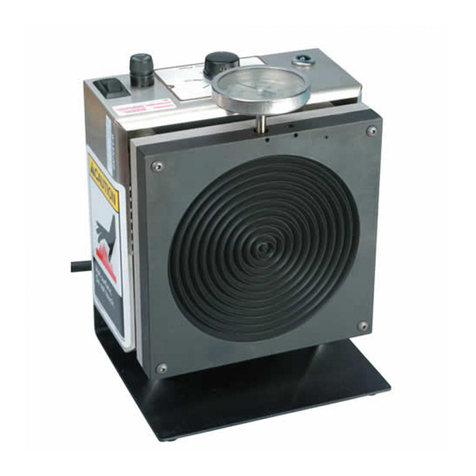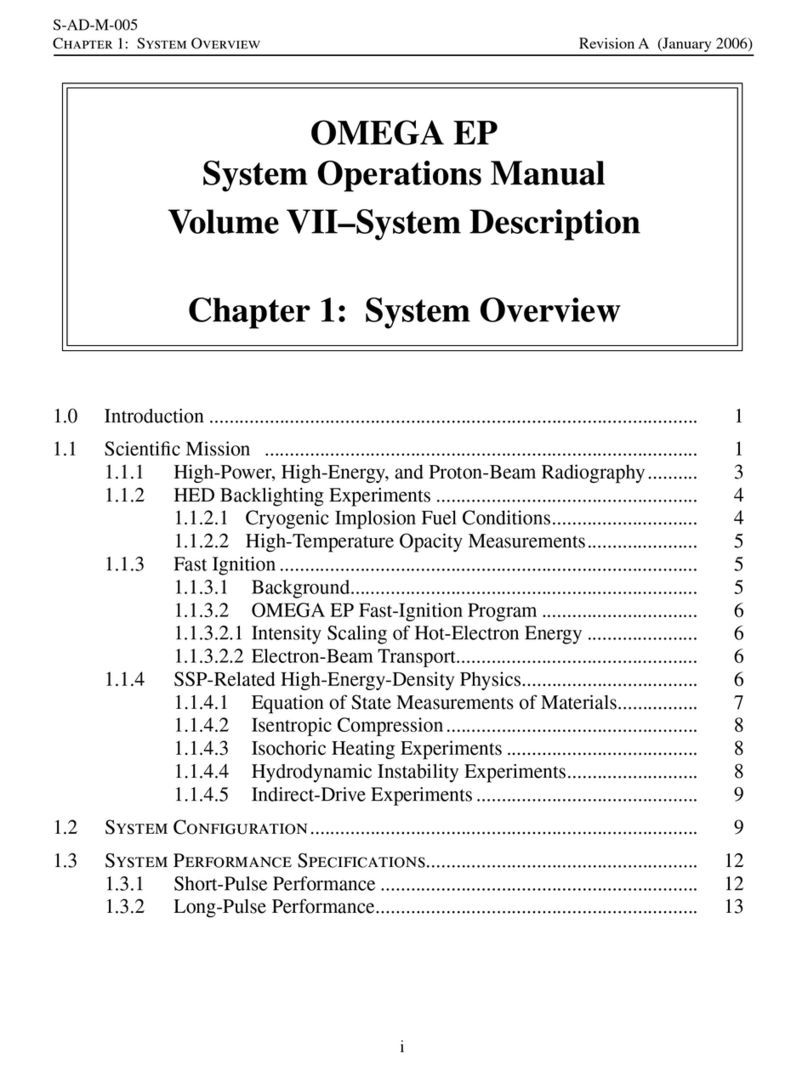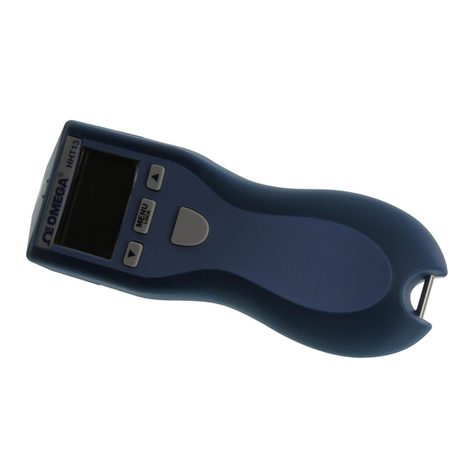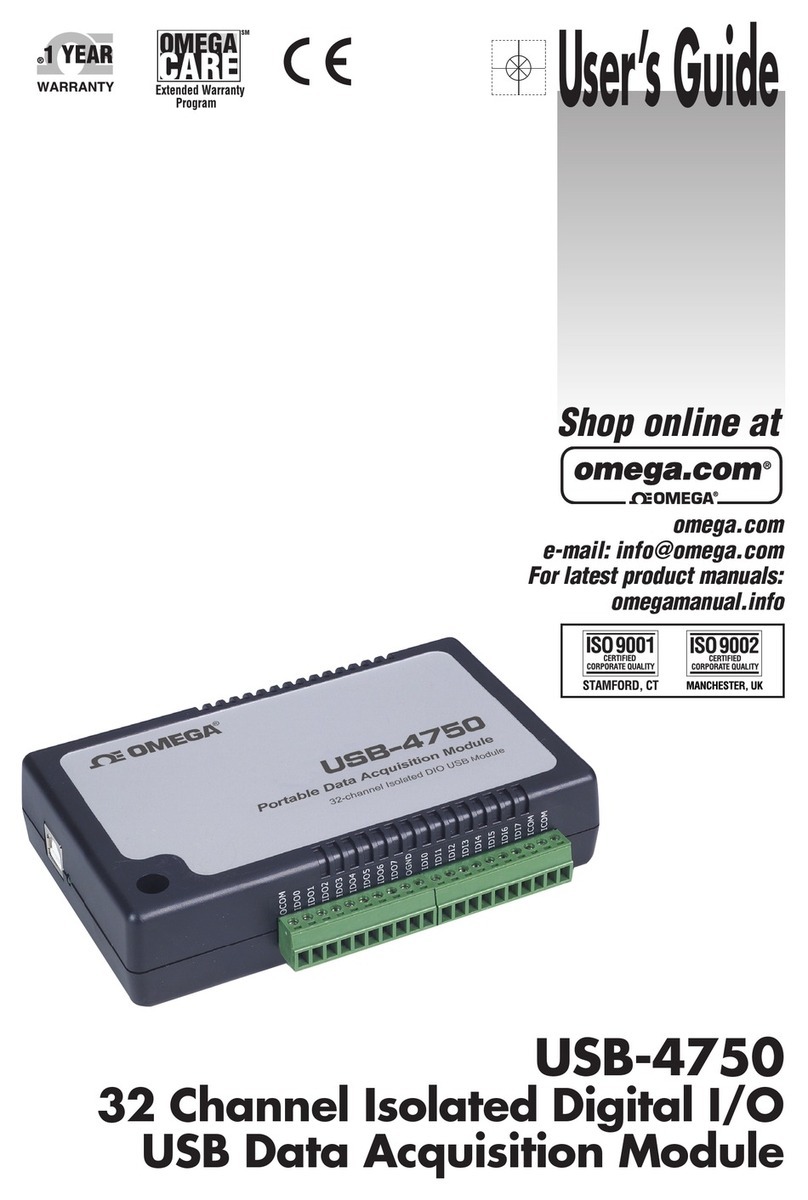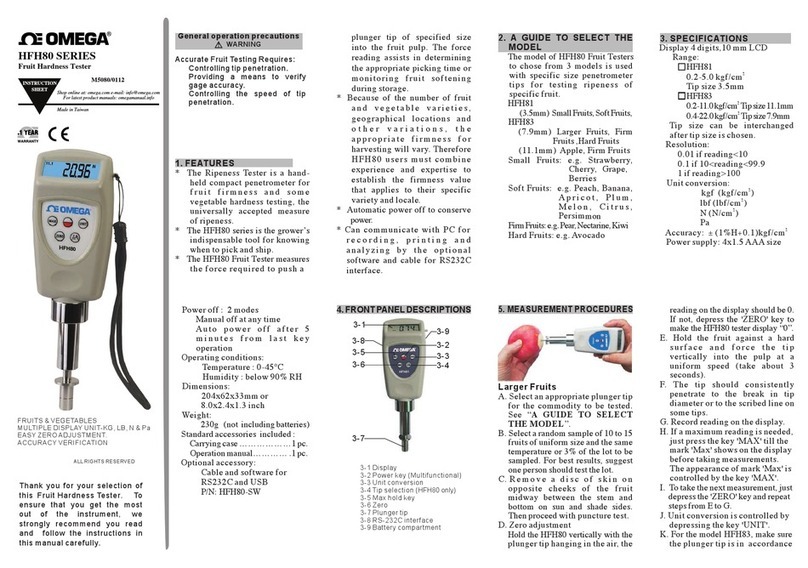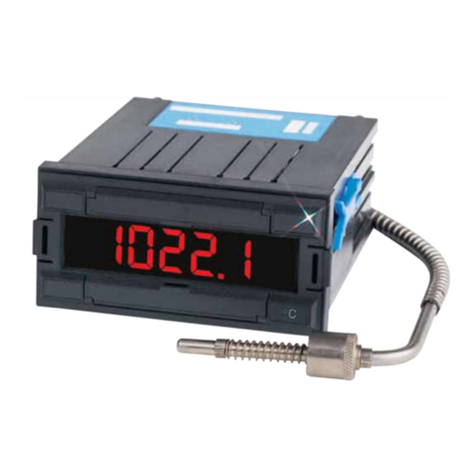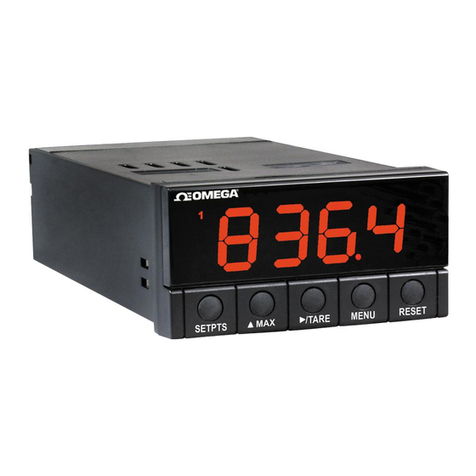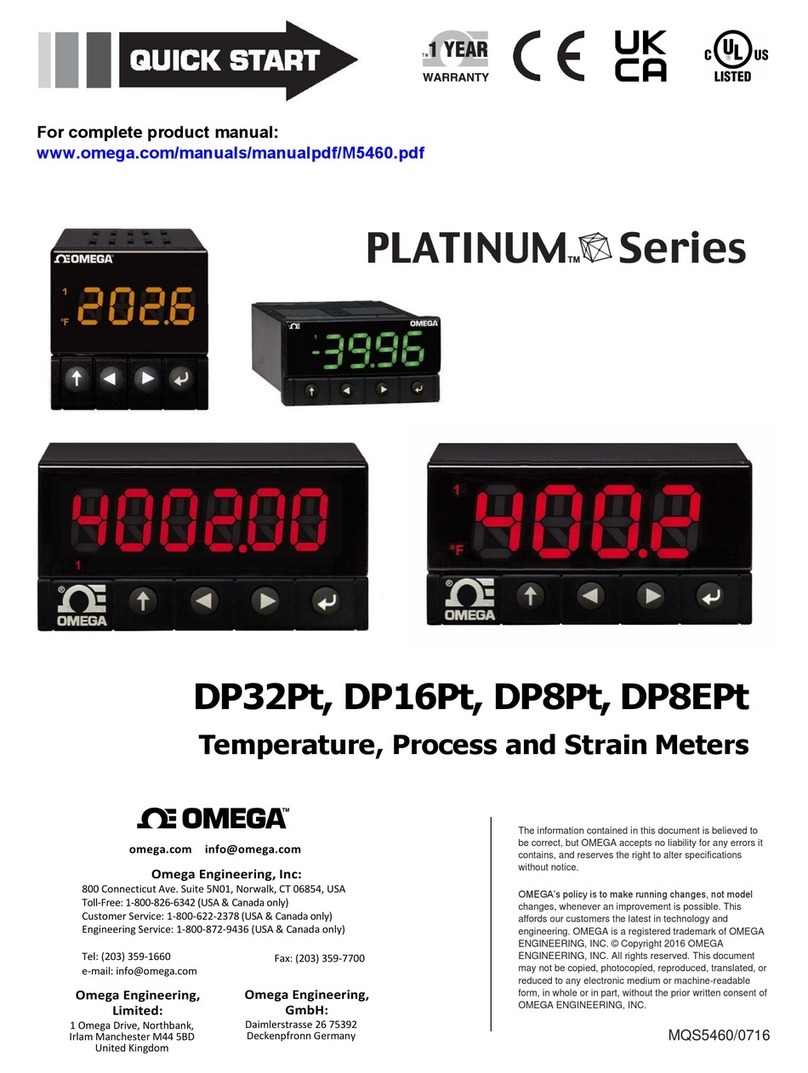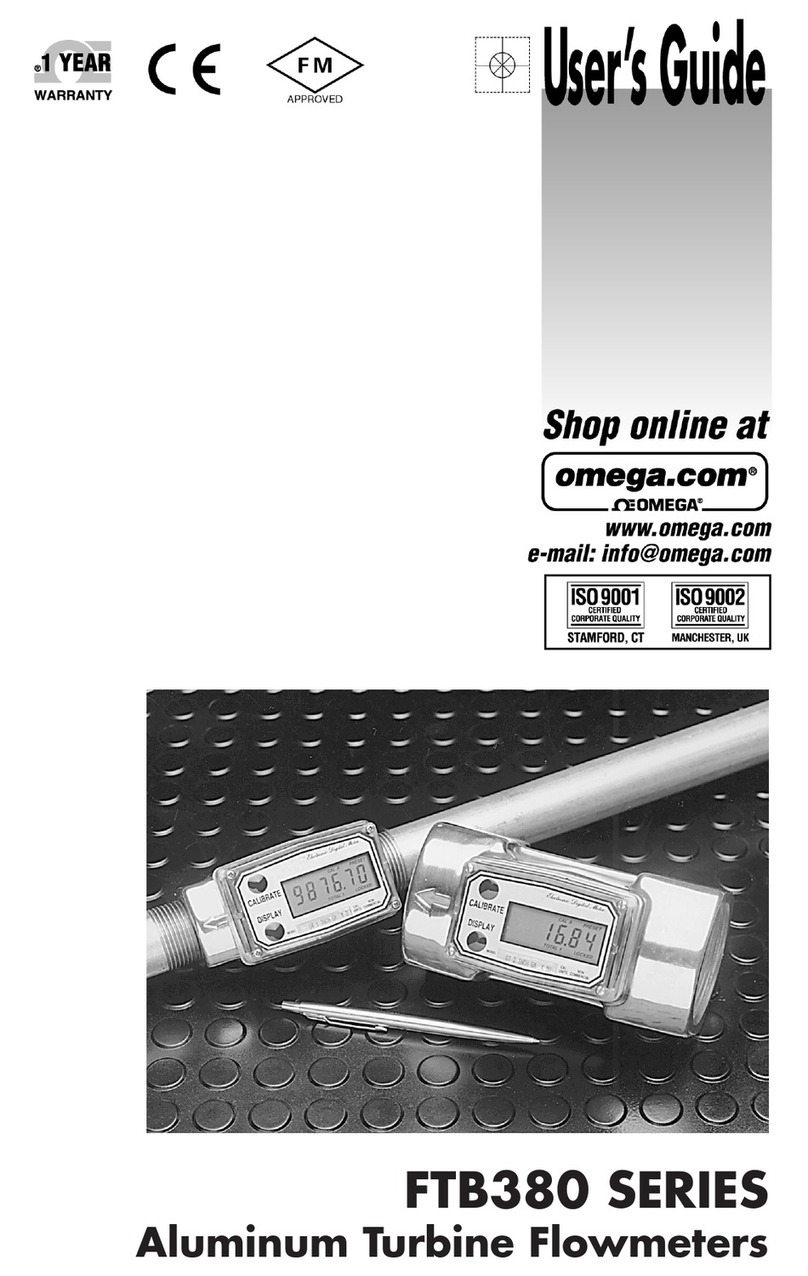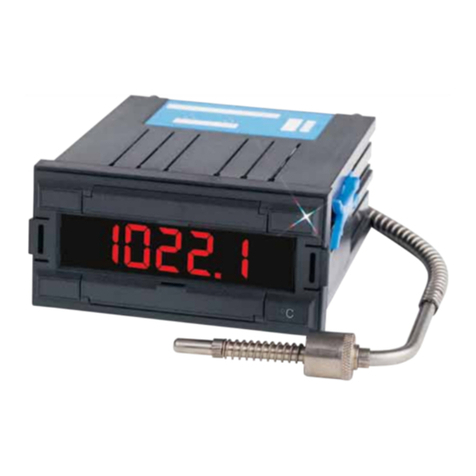
4
2. General Description
Please follow all instructions in this manual to ensure the trouble-free ope-
ration of the FHG ow meters. Omega does not assume responsibility or
liability for damages resulting from noncompliance with these instructions.
The device may only be opened within the warranty period after consulta-
tion and approval by Omega.
3. FHG Flow Meter Selection
4. Declaration of Conformity
5. General Operating Requirements
For the trouble-free, safe, and reliable operation of the ow meters, se-
lecting the correct type and size is critical. Because of the wide variety of
applications and ow meter designs, the technical data in the Omega cata-
log are general in nature. Certain properties of the devices are dependent
on type, size and measuring range, as well as the liquid to be measured.
Please contact Omega or one of our sales and service representatives for
detailed information about the appropriate ow meter for your particular
application.
Flow meters of the ”FHG“ series have been tested for their electromagnetic
compatibility and interference emissions as outlined by the EMC Directive
and are in compliance with the applicable statutory EMC Directives.
They cannot be operated independently, are connected by cable to a po-
wer source, and provide digital electrical signals for electronic evaluation.
All ow meters have a declaration of conformity, which can be requested
if necessary.
Since the electromagnetic compatibility of the entire measuring sys-
tem is also dependent on the installation of the cables, the correct
connection of the shield, and each individual connected device, all
components must comply with the EMC Directive, and the electroma-
gnetic compatibility of the entire system, machine, or system must be
ensured as well.
All ow meters have been tested in accordance with the applicable statuto-
ry EMC Directives of EN 61000-6 and are CE certied. The EC conformity
marking is the CE mark afxed to all ow meters.
Before assembly, commissioning or operation, check and verify the following
properties & aspects of the respective circumstances of your system to ensure
operation is trouble-free, safe, and reliable.
1. The Fluid to be Processed
Are the flow meter seals and materials compatible with for the fluid and any cleaning agents that will be used?
Is the uid viscous or abrasive? Have you properly sized the meter and selected appropriate bearing materials?
Is the uid dirty or does it contain contaminants/pollutants and solid particles that may require ltration?
Does the uid have llers or other additives? What grain sizes do these solids have, and could they block the measuring element?
Is it necessary to install an upstream hydraulic lter (see ltering requirements in section 22 of this document)?
Are tubes and pipes clean and free of assembly residues such as chips, weld spatter?
Is the tank clean and is it impossible for impurities or foreign substances to reach the pipeline or tubing system from the tank?
Is a different uid used frequently and is the system sufciently ushed and rinsed in between?
Are pipelines/tubes and the entire system completely deaerated (the system should be slowly lled with uid before operation at full ow
to avoid hydraulic shock on the mechanical components)?
2. Hydraulic Properties of the System
Is the max. operating pressure of the system less than the max. permissible operating pressure of the ow meter?
Is the max. pressure drop ∆p (at ow meter) below the max. permissible pressure drop?
Is the pressure drop ∆p not excessive with max. ow (e.g. high viscosity)?
Does the ow range of the ow meter (dependent on the viscosity) correspond with the present ow?
Please note that the ow range is less with higher viscosity!
Does the temperature range of the ow meter correspond with the present max. temperature of the uid?
Is the cross-section of the pipelines/tubes large enough and are there no overly large pressure drops in the system?
Is the hydraulic connection (inlet/outlet) connected corrected and sealed properly?
Note: A blocked ow meter can stop the entire ow. Does the system feature an overpressure / bypass valve? This valve must be checked and
maintained at regular intervals.
